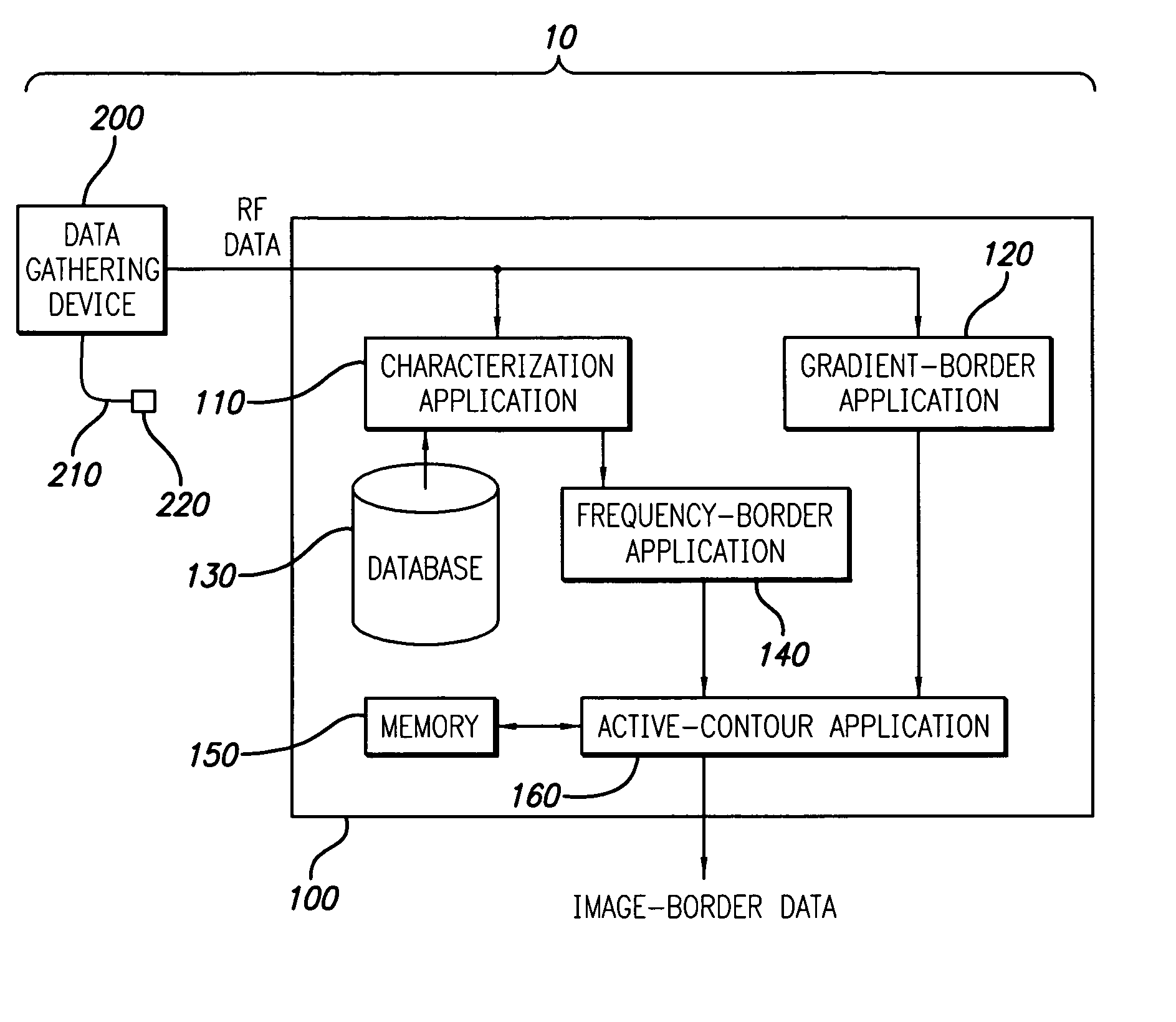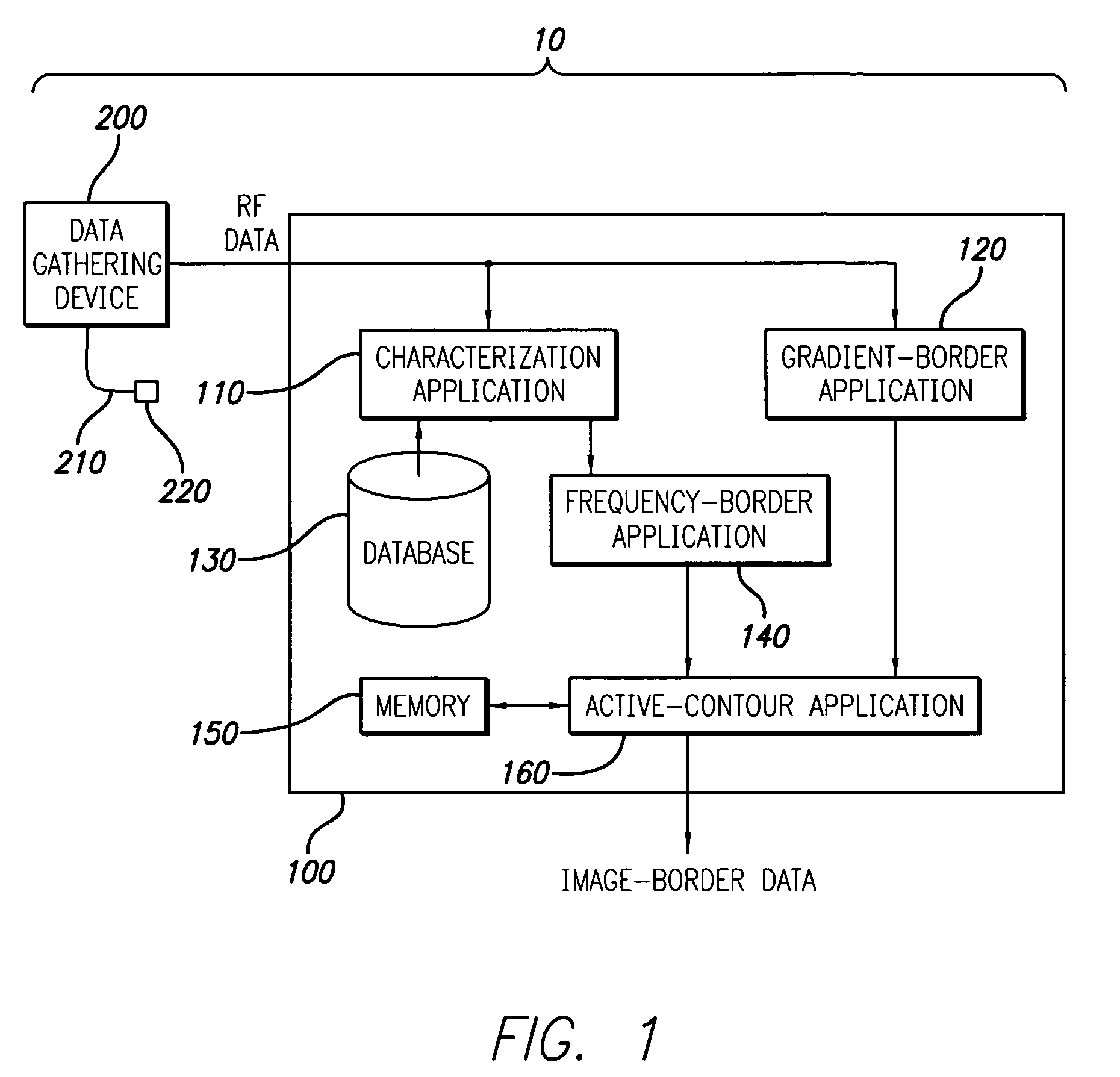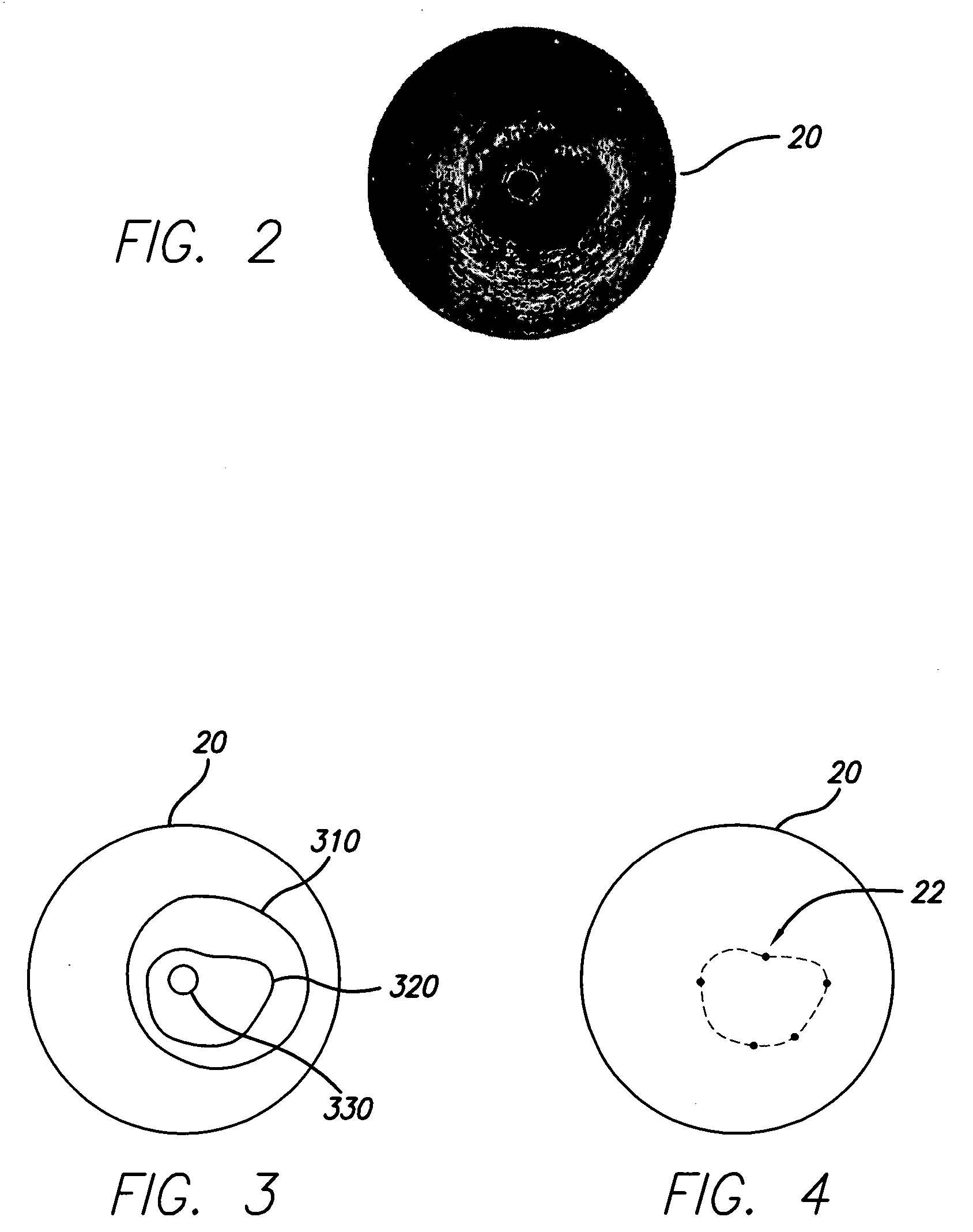System and method for vascular border detection
a technology of vascular border and detection system, applied in the field of vascular images, can solve the problems of poor quality, time-consuming process, and process difficulty
- Summary
- Abstract
- Description
- Claims
- Application Information
AI Technical Summary
Benefits of technology
Problems solved by technology
Method used
Image
Examples
first embodiment
[0030]In the present invention, a plurality of tissue types (e.g., medial, adventitial, plaque, blood, etc.) and related parameters are stored in a database 130. Preferably, the information is stored so that each tissue type is linked to its corresponding parameters. By doing so, each tissue type can be identified (or defined) by the parameters that are linked thereto. It should be appreciated that the term parameter, as that term is used herein, includes, but is not limited to maximum power, minimum power, frequencies at maximum and / or minimum power, y intercepts (estimated or actual), slope, mid-band fit, integrated backscatter, tissue depth, and all parameters (either time or frequency based) generally known to (or discernable by) those skilled in the art. It should further be appreciated that the methods used to acquire the parameters or their relationship to the tissue types (e.g., using scientific theory, experimentation, computer simulation, etc.) are not a limitation of the ...
second embodiment
[0033]In the present invention, the characterization application 110 is further used to identify parameters from the RF data (which is typically in the time domain). Parameters associated with the RF data (or a portion thereof) can be used, for example, to spatially identify certain frequencies (or parameters related thereto). Thus, for example, if a vascular wall comprises multiple tissue layers, corresponding RF data can be used to identify the location of these tissues and the related frequency spectrum can be used to identify tissue types. The use of parameters to identify tissue types is discussed in detail in U.S. Pat. No. 6,200,268, which was issued on Mar. 13, 2001, and U.S. patent application Ser. No. 10 / 647,971, which was filed on Aug. 25, 2003, and are incorporated herein, in their entireties, by reference.
[0034]In either embodiment of the present invention, the RF data (or a transformation thereof) and the identified tissue types (including the association therebetween) ...
PUM
 Login to View More
Login to View More Abstract
Description
Claims
Application Information
 Login to View More
Login to View More - R&D
- Intellectual Property
- Life Sciences
- Materials
- Tech Scout
- Unparalleled Data Quality
- Higher Quality Content
- 60% Fewer Hallucinations
Browse by: Latest US Patents, China's latest patents, Technical Efficacy Thesaurus, Application Domain, Technology Topic, Popular Technical Reports.
© 2025 PatSnap. All rights reserved.Legal|Privacy policy|Modern Slavery Act Transparency Statement|Sitemap|About US| Contact US: help@patsnap.com



